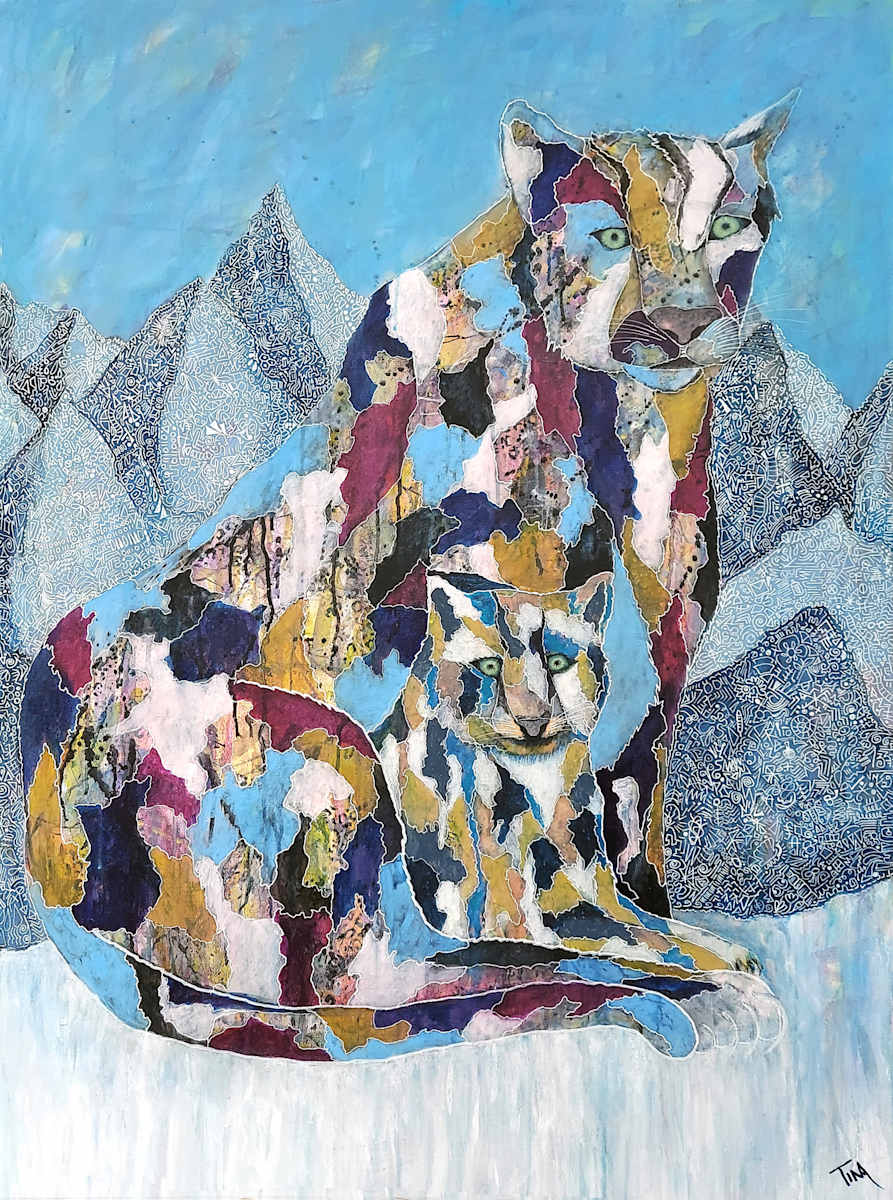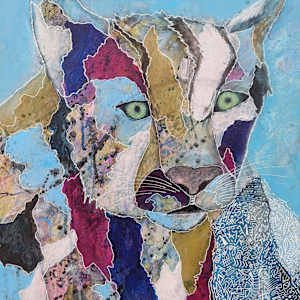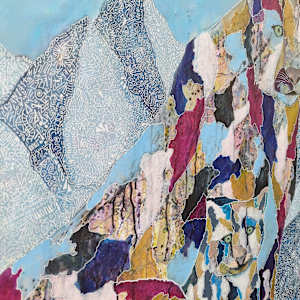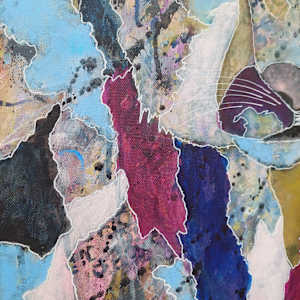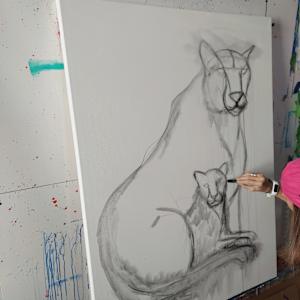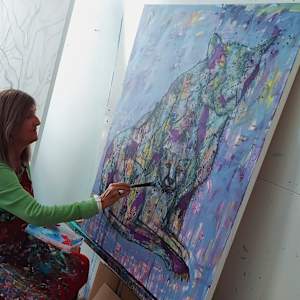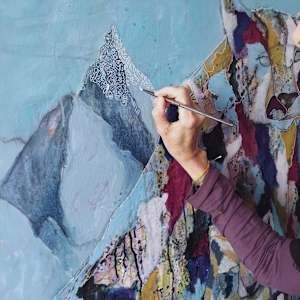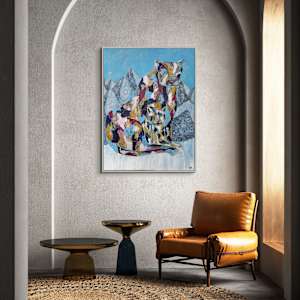In creating this piece, I wanted to capture the fleeting presence of the snow leopard and its cub—guardians of a world on the brink. The abstract, layered mountains stretch high, but their snowy blankets are thinning—a quiet warning from a warming planet. These elusive cats, so well adapted to their rugged terrain, now face shrinking territory, dwindling prey, and mounting threats to their survival.
Poached for their ghostly fur, hunted in retaliation for livestock loss, and pushed ever higher as climate change creeps into their realm, snow leopards are vanishing—both from sight and from the wild. Classified as vulnerable, they represent more than isolation and endurance; they are vital keystone species, holding together the fragile ecosystems of the high mountains. To lose them is to loosen the threads of biodiversity that sustain life in these extreme altitudes.
The patchwork of shapes within their bodies echoes the way developers carve up land for urban expansion—a view I often reflect on when flying above landscapes, seeing the gridded marks of human encroachment. These fractured forms symbolize their eroding habitats and the intrusion of civilization into once-inaccessible territory.
As with much of my work, the final process involves carefully placing symbols that intersect cultures, objects, and moments in time. These clusters are my way of searching for balance—within the piece and within myself—amidst a chaotic world. It becomes a visual prayer, distilling complexity into a hopeful narrative of harmony and connection.
This piece is a tribute to the snow leopard’s resilience, a call to witness their struggle, and a reminder that some sentinels, once lost, cannot be replaced.
Fun facts: Snow leopards don’t roar—they communicate with a soft “chuff” called a prusten. Their thick tails, nearly as long as their bodies, wrap around them like scarves in freezing temps. And unlike most big cats, they’re remarkable jumpers—able to leap up to 50 feet in one bound!
- Subject Matter: Animals - Snow Leopards
- Collections: Conservation Series

